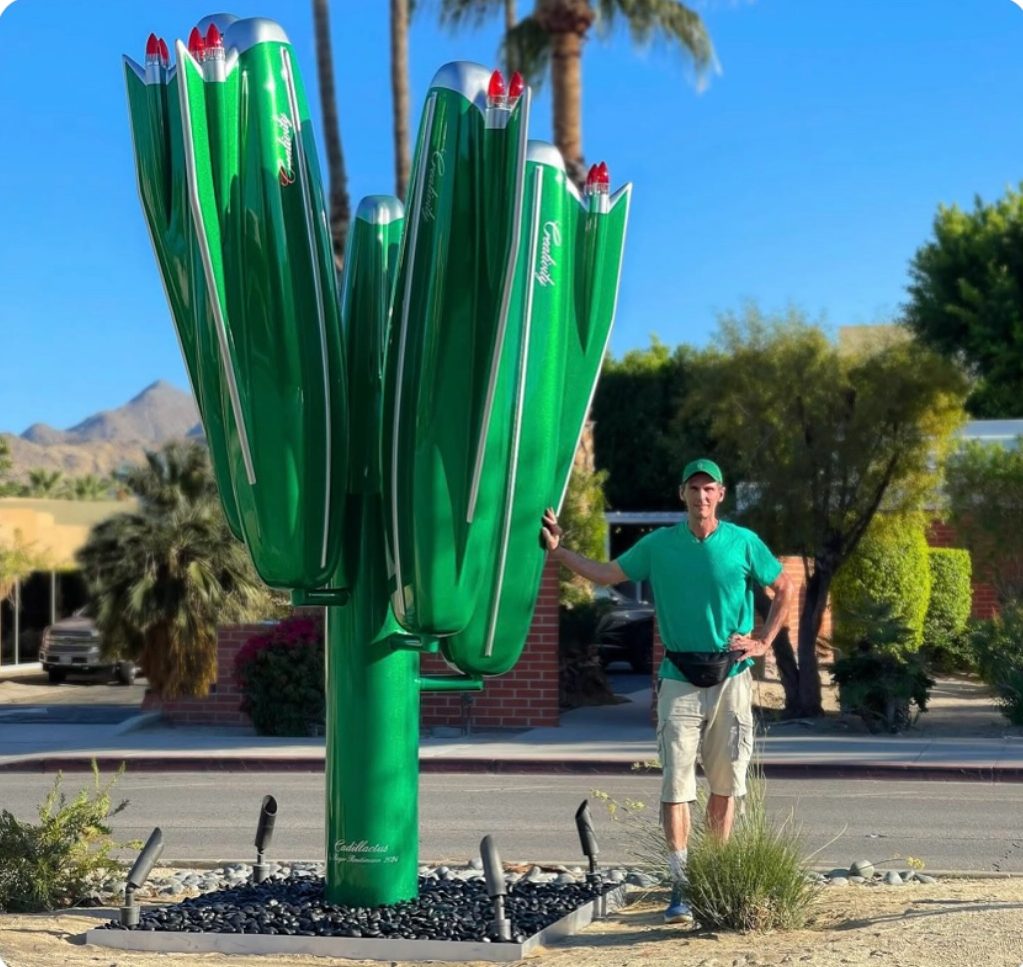This Artist Built a Glowing 16-Foot Cactus Sculpture in Palm Springs From the Fins of a 1959 Cadillac
If you find yourself in Palm Springs, California, and glance down a quiet street lined with palm trees and desert brush, you might spot something that makes you stop in your tracks. Towering 16 feet into the sky, arms outstretched like a natural sentinel of the Southwest, stands a cactus unlike any other you’ve ever seen. It glistens in the sun. Its curves shimmer in vintage chrome. And at night, its tips glow red like desert flowers under moonlight. This isn’t just any cactus—it’s a Cadillac.
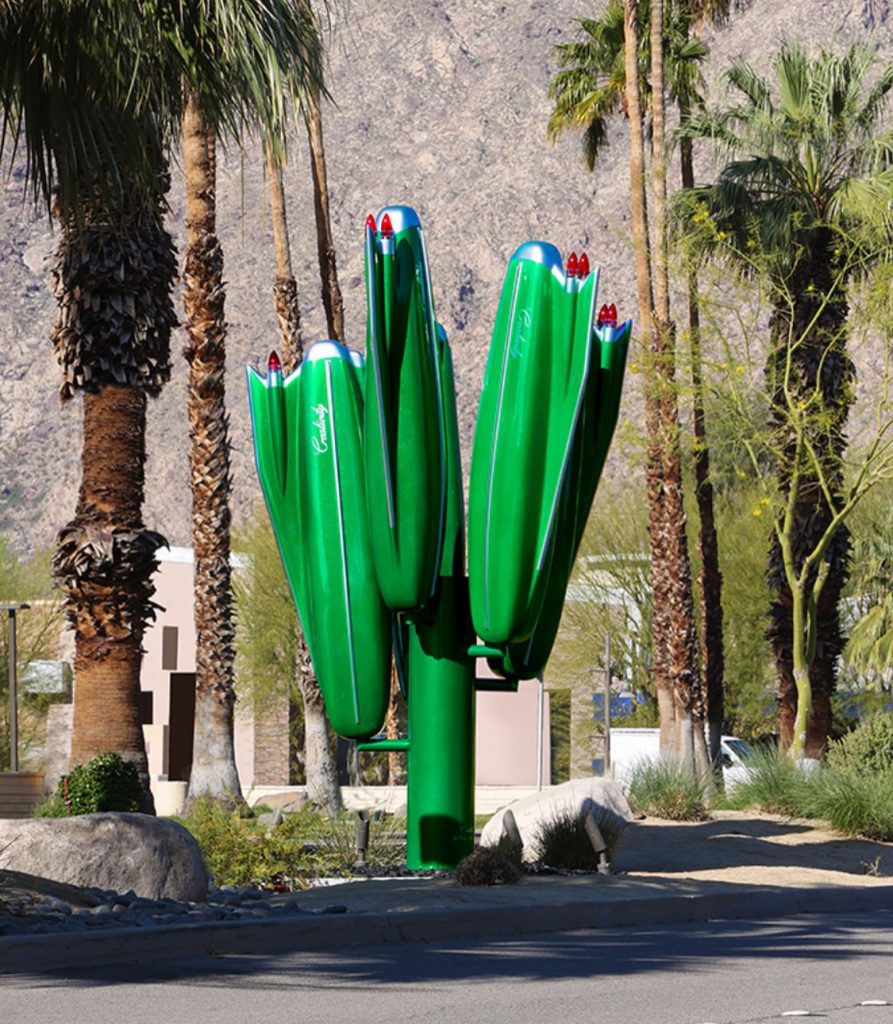
Meet “Cadillactus,” a jaw-dropping sculpture created by Swiss-born artist Roger Reutimann, who now lives and works in Palm Springs. He took something most people would consider junk—parts from a classic 1959 Cadillac—and transformed it into an art piece that feels equal parts retro Americana and surreal desert magic. There’s something almost poetic about the whole thing. A symbol of American excess and innovation—the Cadillac, with its massive fins and glinting tail lights—reborn as a cactus, the resilient icon of the arid West.
Reutimann’s inspiration came from a deep appreciation of the desert landscape and the local culture of Southern California. Palm Springs has always been a unique fusion of nature and design—mid-century modern architecture tucked into the mountains, and vintage cars gleaming under endless sun. So when Reutimann began experimenting with sculpture in this environment, he knew he wanted to build something that honored both.
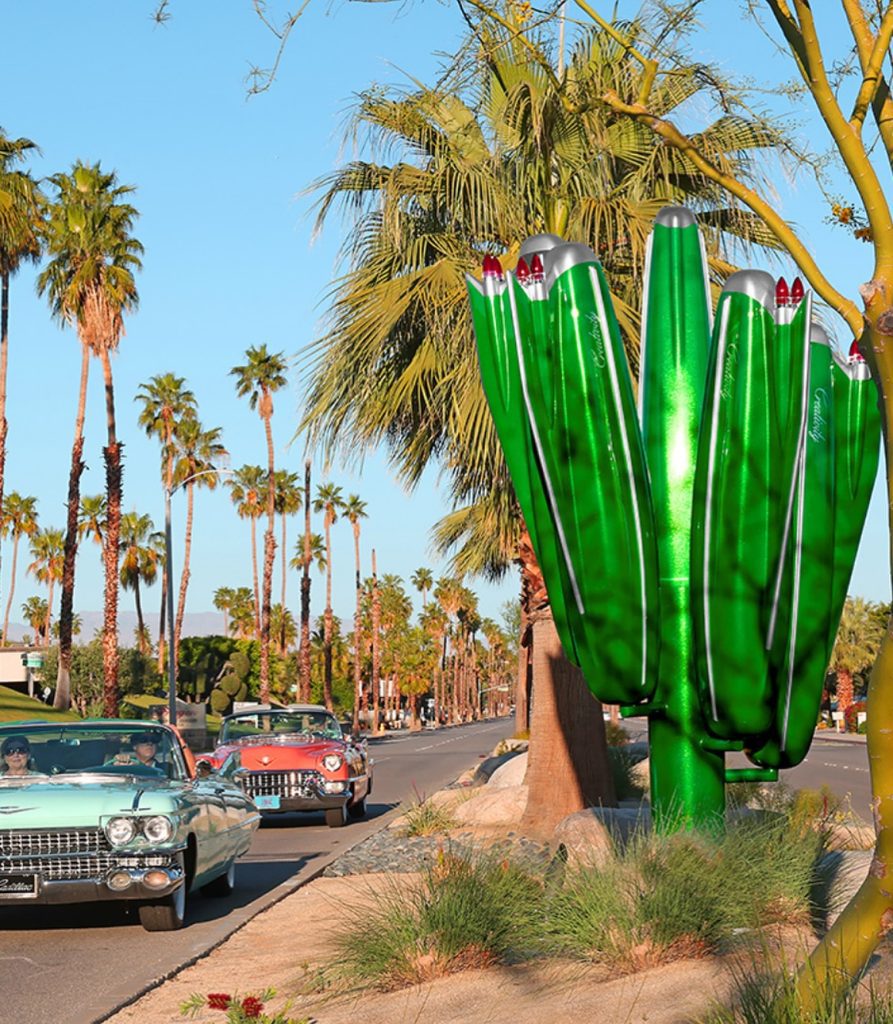
Cadillactus isn’t subtle, and that’s the point. The body of the sculpture is made from a combination of stainless steel and fiberglass, sculpted to resemble the thick, ribbed arms of a saguaro cactus. But instead of thorns or blossoms, the ends are tipped with glowing red 1959 Cadillac tail lights—those signature rocket-shaped lamps that once lit up the roads of America’s golden highway era. In the daylight, the chrome and candy-apple green finish reflect the desert sky. By night, the whole thing comes alive with lights, standing like a beacon of nostalgia and innovation rolled into one.
And it’s not just about looks. The sculpture’s name, Cadillactus, is a word that immediately makes people smile. It’s playful, memorable, and invites curiosity. That balance of whimsy and craftsmanship is something Reutimann is known for. His background isn’t in traditional car restoration or industrial design—he trained as a classical pianist before pursuing art full time. That sensitivity and precision show through in his work, even when the materials are massive and metallic.

Cadillactus has quickly become something of a local landmark, drawing tourists, photographers, and curious art lovers from all over. It’s not located in a formal gallery, but rather stands freely for the public to enjoy. That accessibility is part of its charm. It feels like a gift left in the open, waiting to be discovered. Some people pass by and just take a quick photo. Others linger, staring at the way light plays off its surface, wondering how many hours went into arranging those panels and polishing that steel.
There’s a deeper story, too, behind the use of the Cadillac. In many ways, Cadillactus is a reflection on change—on how even icons of power and status can become obsolete, then repurposed into something that serves a new kind of beauty. The Cadillac once roared down highways, its fins cutting through wind like a spaceship. Today, those same fins are rooted in sand and stone, silent but striking. The sculpture doesn’t mourn the past. It celebrates what happens when creativity meets reinvention.
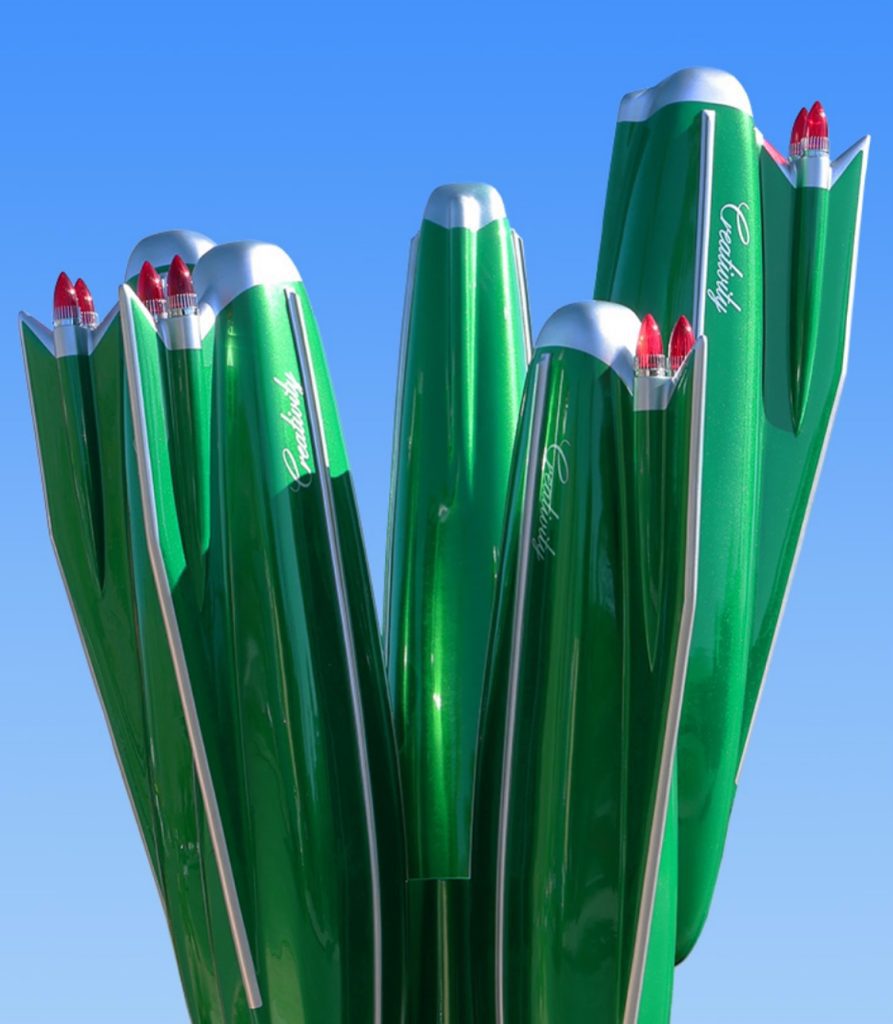
Art has always had a way of breathing life into objects we thought we’d left behind. In this case, what could have been scrap metal was reborn as something joyful. It’s no accident that Reutimann chose to make a cactus. Cacti are symbols of survival, of adapting to harsh conditions and thriving regardless. In that sense, Cadillactus becomes more than just a quirky roadside oddity. It’s a reminder that beauty can rise from heat and ruin, that even the most unlikely materials can become meaningful when shaped with care.
And of course, it’s just plain cool. There’s no way around it. The clean lines, the retro glitz, the way the whole thing looks like it might drive off if you’re not paying attention—it captures that specific, elusive vibe Palm Springs is famous for. It wouldn’t work the same way in a city like New York or Chicago. Cadillactus belongs to the desert, to the palm-lined streets and the endless sunlight that makes its green sparkle and its tail lights shine.
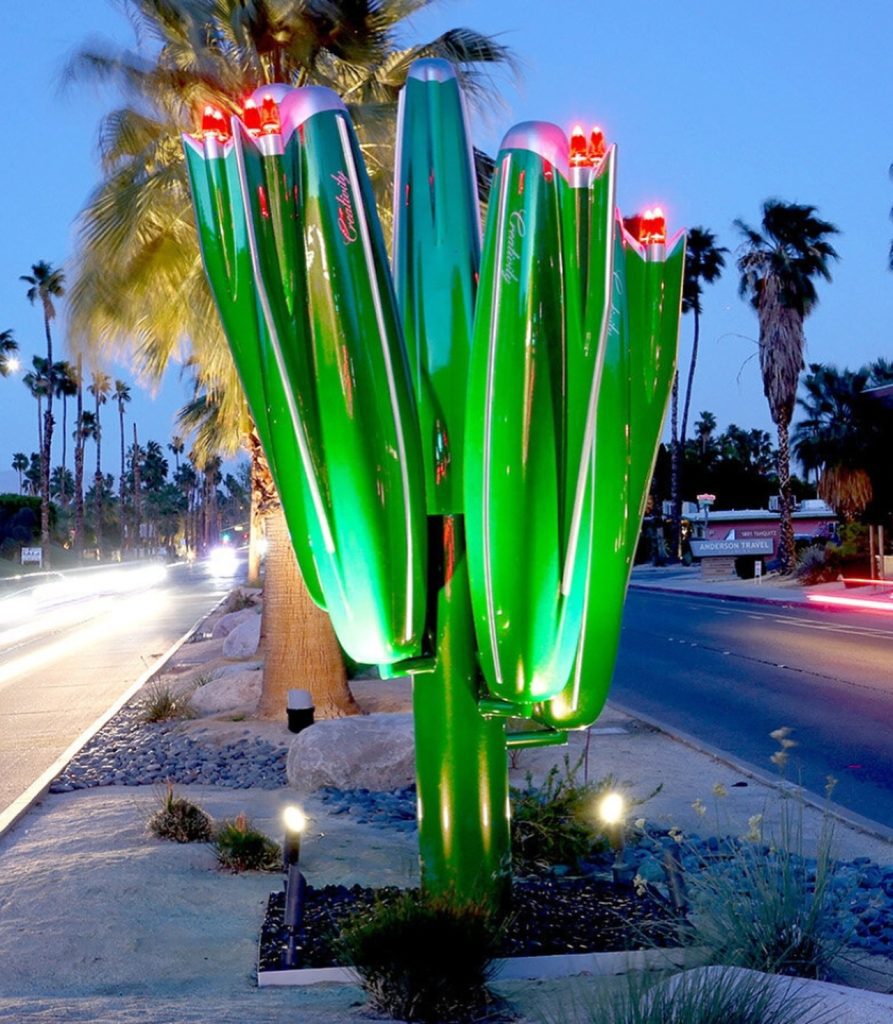
Reutimann has said that part of his goal is to create art that makes people smile. And in a world that sometimes feels heavy, that’s a noble mission. Cadillactus does that effortlessly. It makes you smile not because it’s silly, but because it’s imaginative. It asks nothing of you except that you stop, look, and enjoy the surprise.
You don’t need to be a car buff to appreciate it. You don’t need to know anything about art. The sculpture speaks for itself. It’s a bright green cactus made of car fins, glowing under desert skies. It’s fun. It’s weird. It’s wonderful.
And somehow, it just makes perfect sense.

Daniel Reed is a curious mind with a passion for breaking down how the world works. With a background in mechanical engineering and digital media, he turns complex ideas into easy-to-understand articles that entertain and inform. From vintage tools and modern tech to viral internet debates and life hacks, Daniel is always on the hunt for the “why” behind the everyday. His goal is simple: make learning feel like scrolling through your favorite feed — addictive, surprising, and fun.
